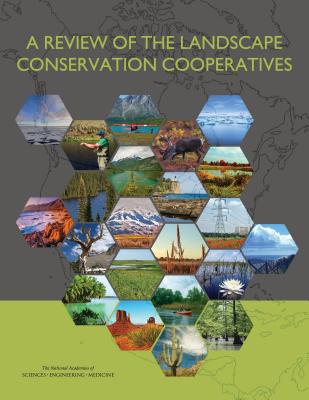The United States' tradition of conserving fish, wildlife, habitats, and cultural resources dates to the mid-19th century. States have long sought to manage fish and wildlife species within their borders, whereas many early federal conservation efforts focused on setting aside specific places as parks, sanctuaries, or reserves. With advances in landscape ecology over the past quarter-century, conservation planners, scientists, and practitioners began to stress the importance of conservation efforts at the scale of landscapes and seascapes. These larger areas were thought to harbor relatively large numbers of species that are likely to maintain population viability and sustain ecological processes and natural disturbance regimes - often considered critical factors in conserving biodiversity. By focusing conservation efforts at the level of whole ecosystems and landscape, practitioners can better attempt to conserve the vast majority of species in a particular ecosystem. Successfully addressing the large-scale, interlinked problems associated with landscape degradation will necessitate a planning process that bridges different scientific disciplines and across sectors, as well as an understanding of complexity, uncertainty, and the local context of conservation work. The landscape approach aims to develop shared conservation priorities across jurisdictions and across many resources to create a single, collaborative conservation effort that can meet stakeholder needs. Conservation of habitats, species, ecosystem services, and cultural resources in the face of multiple stressors requires governance structures that can bridge the geographic and jurisdictional boundaries of the complex socio-ecological systems in which landscape-level conservation occurs. The Landscape Conservation Cooperatives (LCC) Network was established to complement and add value to the many ongoing state, tribal, federal, and nongovernmental efforts to address the challenge of conserving species, habitats, ecosystem services, and cultural resources in the face of large-scale and long-term threats, including climate change. A Review of the Landscape Conservation Cooperatives evaluates the purpose, goals, and scientific merits of the LCC program within the context of similar programs, and whether the program has resulted in measurable improvements in the health of fish, wildlife, and their habitats. Table of ContentsFront MatterSummary1 Introduction2 Scientific and Conservation Merits of Landscape-Scale Conservation and the Landscape Conservation Cooperatives3 Evaluating the Landscape Conservation Cooperatives Network Strategic Plan4 An Examination of the Evaluation Process for the Landscape Conservation Cooperatives5 The Landscape Conservation Cooperatives and Other Similar Federal Programs6 An Assessment of the Early Accomplishments and Likely Long-Term Outcomes and Impacts of the Landscape Conservation Cooperatives NetworkReferencesAppendix A: Greater Sage-Grouse: A Collaborative Conservation EffortAppendix B: Mississippi River Basin and Gulf Hypoxia: Collaborations Across Multiple LCCsAppendix C: Guidance for Landscape Conservation Planning and DesignsAppendix D: Description of Other Federal ProgramsAppendix E: Secretarial Order No. 3289Appendix F: Landscape Conservation Cooperatives 2014 Network Strategic PlanAppendix G: Goals of Individual LCCs Compared to Goals of the LCC Network Strategic PlanAppendix H: Committee and Staff Biographies
Get A Review of the Landscape Conservation Cooperatives by at the best price and quality guranteed only at Werezi Africa largest book ecommerce store. The book was published by National Academies Press and it has pages. Enjoy Shopping Best Offers & Deals on books Online from Werezi - Receive at your doorstep - Fast Delivery - Secure mode of Payment
 Jacket, Women
Jacket, Women
 Woolend Jacket
Woolend Jacket
 Western denim
Western denim
 Mini Dresss
Mini Dresss
 Jacket, Women
Jacket, Women
 Woolend Jacket
Woolend Jacket
 Western denim
Western denim
 Mini Dresss
Mini Dresss
 Jacket, Women
Jacket, Women
 Woolend Jacket
Woolend Jacket
 Western denim
Western denim
 Mini Dresss
Mini Dresss
 Jacket, Women
Jacket, Women
 Woolend Jacket
Woolend Jacket
 Western denim
Western denim
 Mini Dresss
Mini Dresss
 Jacket, Women
Jacket, Women
 Woolend Jacket
Woolend Jacket
 Western denim
Western denim
 Mini Dresss
Mini Dresss






























































